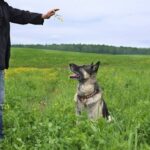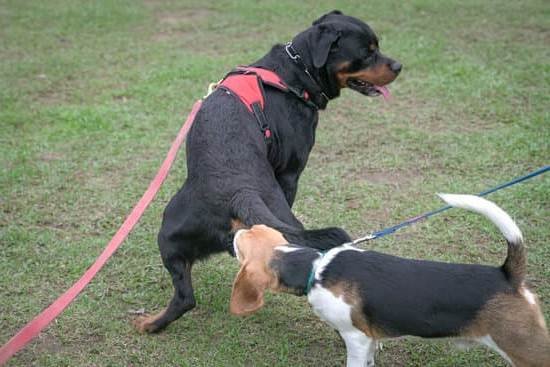Introduction
Training your dog not to leave your property is important for a variety of reasons. It keeps your pet from getting lost or running away, which can be an anxiety-inducing experience for you both. Additionally, if your dog runs out of the yard and onto someone else’s property it can create strain with neighbors or even result in legal issues depending on the laws in your municipality. Finally, by keeping your canine companion close, you keep them safe and secure, keeping any predators and potentially dangerous environments away from them. Training him/her not to roam also gives you peace of mind knowing that they will always be nearby when you need them.
Barriers
A physical barrier can be an effective way to help keep your dog contained and on your property. Some of the physical barriers you can put in place include:
Fences – Installing a fence around your yard is one of the most common ways people contain their dogs. It’s important to select a fence that is tall enough, made of sturdy material, and has no holes or gaps that could allow your pup to escape.
Gates – Placing secure gates at entrance points can serve as additional boundary lines for your pet. Make sure the gates are locked securely with a key or combination lock to prevent unauthorized access.
Netting – To keep smaller dogs from sneaking through openings, consider installing netting around the perimeter of your property or over openings like air ducts or garages.
Privacy Fencing – Privacy fencing is an economical solution if you’re looking for extra protection from outside sources. With this type of fencing, visibility is blocked so curious eyes won’t be tempted to come near or try to coax your puppy off the property.
Dog Runs – Another option for containing pets are dog runs. These are small fenced-in areas enclosed with four walls where you can safely leave your canine companion while he explores his run within boundaries.
Positive Reinforcement Training
Positive reinforcement training is one of the most successful methods for teaching your dog to stay on your property, and it only takes a little patience and a few simple commands. Start by setting up some boundaries around your property and make sure that your dog can clearly see them. You will want to use an invisible fence or physical barrier, such as a wooden fence, if you can not immediately access a visible fencing solution.
Once the boundaries are established, begin by consistently reinforcing the different commands you choose to use when instructing your pet to stay within the designated area. Many owners prefer using positive words like “stay”, “stop” or “no” followed by giving their pet rewards or treats when they obey. Doing this frequently helps build a strong bond between you and your pup and will strengthen their understanding of the command each time they hear it.
When out with your pet practicing positive reinforcement techniques, be sure to carry plenty of treats with you so that you can reward an appropriate behavior whenever needed. Also be prepared to correct any wrong behavior or disobedience while following through with rewards in order to continue building good habits in your furry companion. Set up clear expectations from the start so that there is no confusion about what behavior is unacceptable when attempting to train your dog not leave your property.
Consistency and Patience
One of the most important aspects of training a dog to remain in one place is consistency and patience. By consistently reinforcing that behavior you are teaching your dog it is acceptable to stay put which ultimately decreases their chances of wandering off or becoming lost. Patience is important as well because dogs learn differently than humans do, so it could take several attempts before they learn what you want them to do.
Having an understanding of canine instinct and behavior can be beneficial when trying to train your dog not to leave your property as well. Being familiar with their natural urges and needs will help you identify why they may be feeling the need to escape or wander away from home, such as if they hear unfamiliar noises on the street or fear strange people or animals nearby. Offering positive reinforcement and creating boundaries will help redirect these instinctual desires in the right direction and provide your pet with guidance. Additionally, keeping a regular routine for walking,, feeding and playing time can help decrease anxiety and keep them calmer overall making it easier for them to follow basic commands like remaining within property bounders.
Socializing Your Dog
When training a dog to not leave your property, it is important to ensure they are well socialized. Socializing your pet can help them adjust to being confined and will reduce their risk of attempting to leave the area. This can be done in several ways such as long walks on-leash in familiar or new environments, regular visits to dog parks and other areas where there are knowledgeable people with dogs around, and allowing them to explore indoors or fenced-in outdoor spaces (in peak times only).
Through these activities and interactions, dogs learn proper behaviors such as not straying too far from you, responding positively when given commands, becoming comfortable with unfamiliar faces, sounds, objects and smells, learning how to interact with other animals calmly, and understanding when it is or isn’t appropriate to bark. Through positive reinforcement of appropriate behavior, dogs will become more likely to remain on the property without running off. Alongside socialization activities it is also important that owners consistently enforce rules such as “no peeing” outside of designated areas while offering rewards for complying with requests.
Rewards & Playtime
When trying to train your dog not to leave your property, using rewards and playtime can be a great way to ensure that they stay within their designated boundaries. Playtime can be especially effective in reinforcing the idea that staying within the confined area is a beneficial behavior. You can use different games and activities that your dog will find fun and rewarding when they do obey by staying where you want them to. Additionally, providing healthy treats upon completion of the desired action will help to reinforce the positive behavior. Toys are also an excellent reward for compliance; chewing toys, squeaky toys and plush toys are all great choices as rewards for a job well done! As with any type of dog training, consistency is key – consistently implement these positively reinforced behaviors and soon your pup will understand what it takes to remain within the boundaries of your property.
Conclusion
The article has provided a few ways to train your dog not to leave your property, such as using visual barriers, rewards, treats and whistles for reinforcement. It is important to be consistent in training and have patience, so that the dog can become more familiar with expectations. Additionally, you should always remember to praise your dog and provide them with plenty of praise throughout their training process.
To conclude, there are many methods available that you can use to help teach your pup not to leave your property boundaries, such as utilizing fencing or leash-based solutions. By providing positive reinforcement consistently and in a timely manner, your dog will soon learn which behavior is acceptable and what should be avoided. Additionally it may be beneficial to seek the assistance of a professional trainer for more specific advice if needed. Furthermore, researching local laws applicable to dogs, such as leash laws or those covering trespassing on private properties can also help ensure compliance from pet owners.

Welcome to the blog! I am a professional dog trainer and have been working with dogs for many years. In this blog, I will be discussing various topics related to dog training, including tips, tricks, and advice. I hope you find this information helpful and informative. Thanks for reading!





